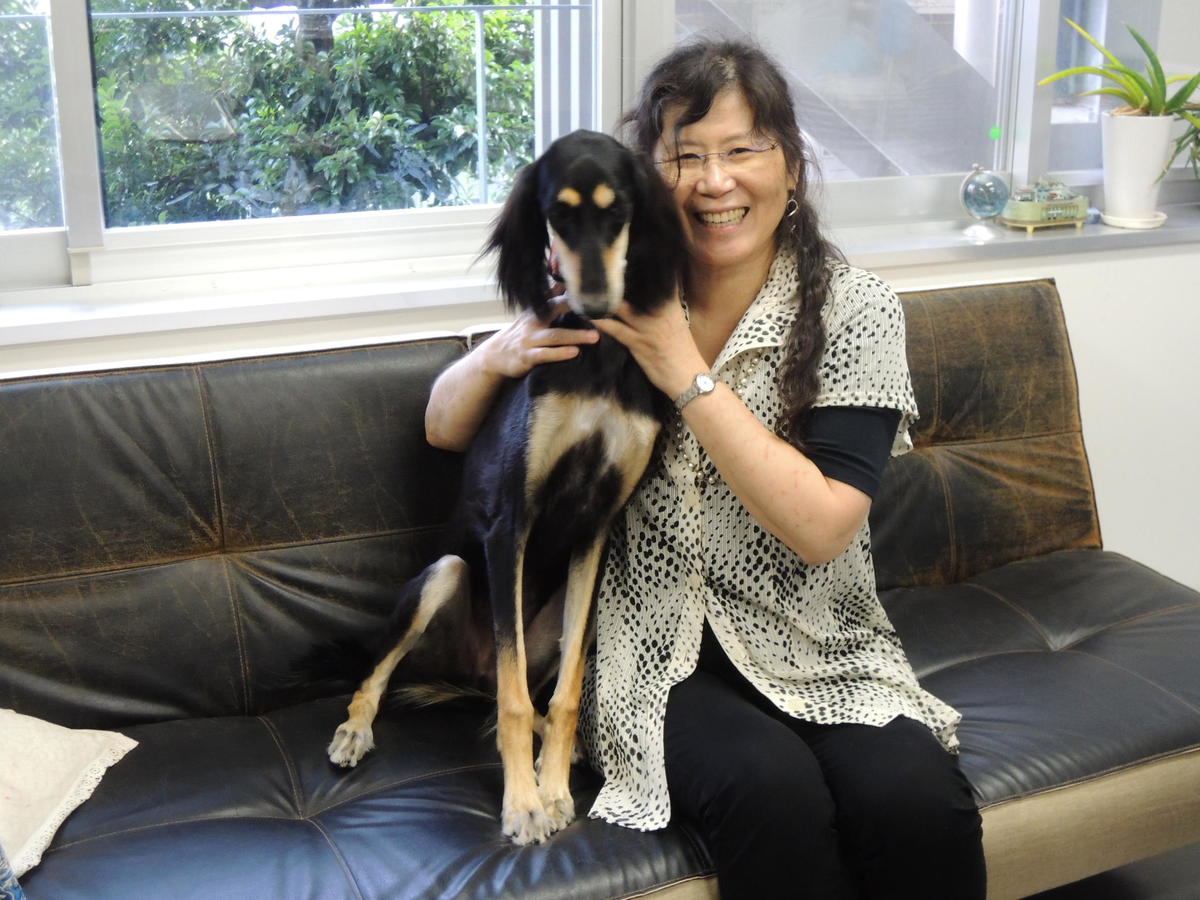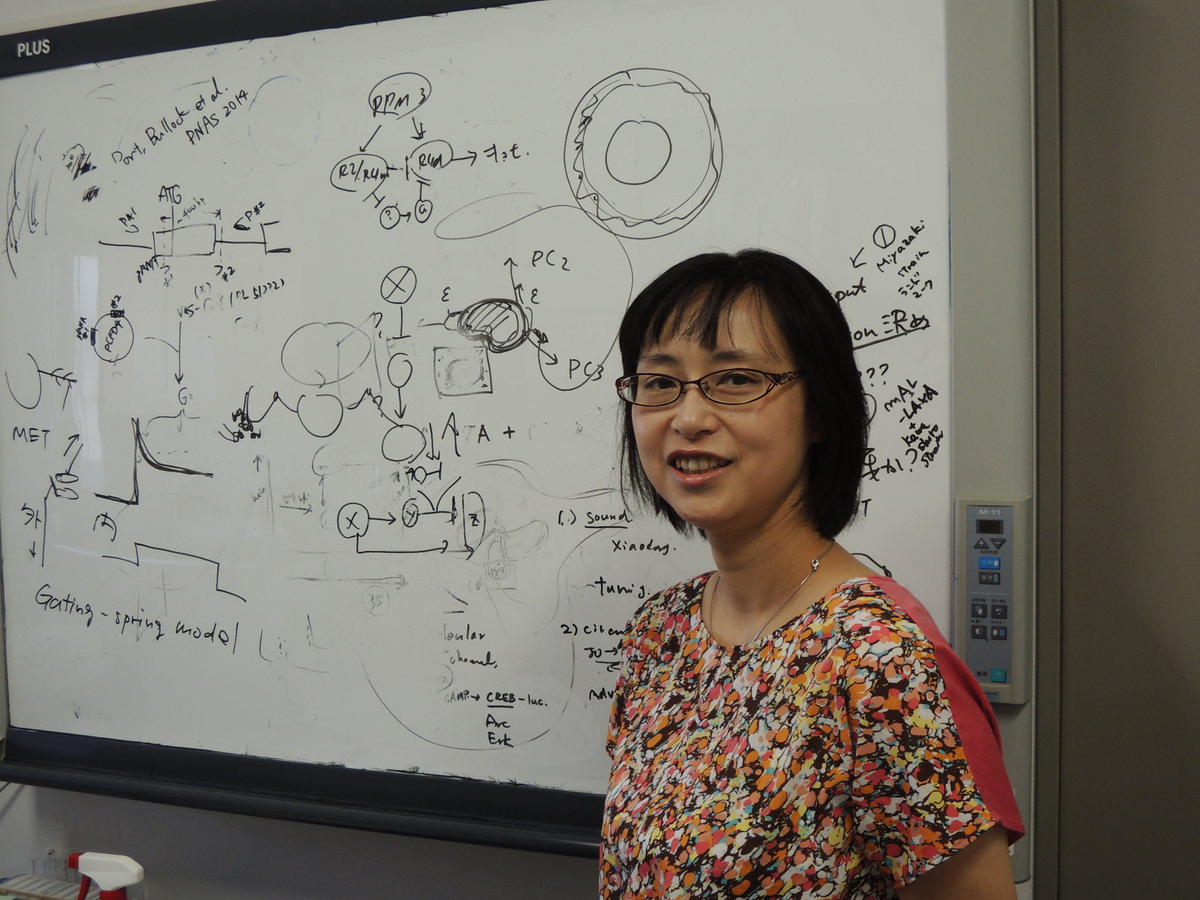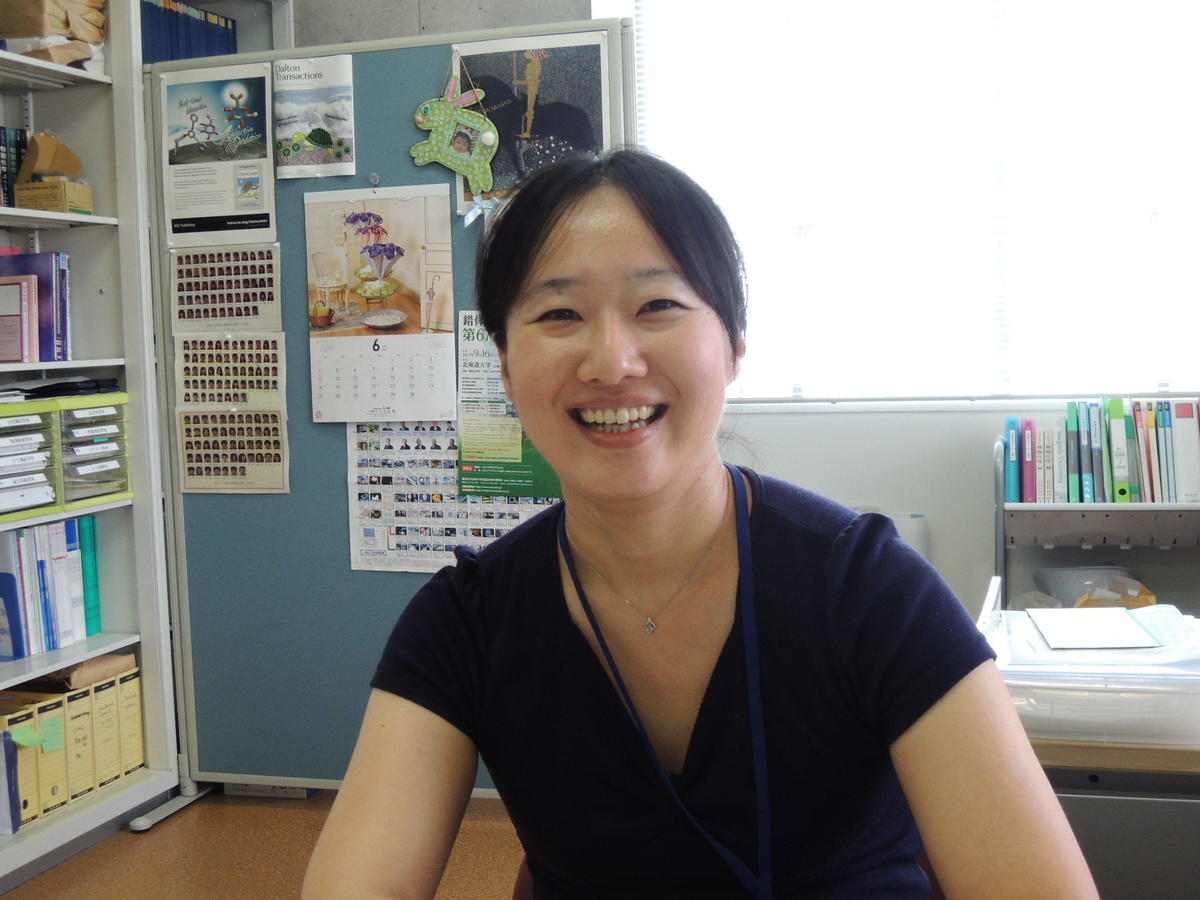July 18, 2017
How Female Professors in Their Mid-30's Came into Meidai
The Graduate School of Science at Nagoya University boasts two female academics who reached professorship in their mid-30's. Even in the entire country, I don't think there are many female professors as young as them; after all, it is rare even for men to reach professorship in their thirties. There are, however, people who achieved just that here at Meidai. What makes it possible, I guess, is the institution's culture that encourages a free exchange of ideas regardless of one's positions, and the various initiatives that have made Meidai famous for its wealth of female talents. One such initiative is the daring move of introducing female-only posts.
Professor Azusa Kamikouchi in the Division of Biological Science was appointed to a female-only post through open recruitment in 2011. She was 36 and, after a PhD in Pharmacy from the University of Tokyo and a spell as a research fellow in Germany, working as an assistant professor at Tokyo University of Pharmacy and Life Sciences at the time. "I didn't think about applying to be a professor yet," confesses Kamikouchi, "but I did. The recruitment for a female-only post made me consider myself as a candidate." Without the gender restriction, she probably would not have tried, choosing instead to wait until later.
The recruitment call was for a very unique post: a Principal Investigator (PI), an independent researcher at the professor level or similar, and the first ever in Japan. The university initially bears the cost of the PI's post, for up to five years, until she is transferred to the full professorial post. Once the post is vacated, a new call is put out to fill it again. Since the candidate is regarded as a professor-in-waiting, the selection process is just as rigorous as that of conventional open recruitment. Any woman who successfully fills this slot would be equally successful in open recruitment. Nevertheless, the competition for this post is exceptionally fierce because of the gender restriction.
Kamikouchi looks back and wonders: "I don't know why I decided the job was worth applying for only because it was for a woman - why I was so convinced it had to be a female-only post." It may be, perhaps, to do with the general tendency for men to be more self-confident while women often underrate themselves.
Now on the other side of the recruitment table, she has become acutely aware of how few women apply for posts. Of course, this is partly because female researchers are a very small minority. Professor Ikue Mori, a colleague of Kamikouchi's in the Division of Biological Science, believes that the key to increasing the number of women is "not to limit the field and instead to focus on the quality of research." The narrower the field of research, the smaller the number of women in it; by casting the net wider, more women can be found in the talent pool.
The seismologist Robert J. Geller, Professor Emeritus at the University of Tokyo, points out in an interview titled "the challenge of internationalizing universities," which appeared in the Japanese newspaper Nihon Keizai Shimbun on July 12, that one of the reasons why the number of non-Japanese academics remains low is recruitment criteria are vague and designed to make sure that only your disciples and buddies would meet them. He pulls no punches in his criticism: the system cannot attract outsiders no matter how brilliant they are. Universities have become a closed shop. I suspect the same applies to recruiting female researchers. A closed shop is hard to crack for women, who are vastly outnumbered. In the US, the Massachusetts Institute of Technology successfully doubled the number of women in STEM faculties without compromising on the standard only by looking far and wide for talents.
The time will come one day - and soon, it is hoped - when female-only posts will no longer be necessary. In the meantime, however, they seem to have a certain positive effect.
Kamikouchi, on the other hand, feels that the unique challenges women often face may also be a reason why so few women apply. When a female researcher is also a mother, it usually means that the move to take up a post involves taking her children with her. This was certainly the case for Kamikouchi, who had to relocate from Tokyo to Nagoya with her 1-year-old daughter while her husband stayed behind in Tokyo. Her mother, who had been living alone until then, also moved to Nagoya to help. Meidai has an on-campus nursery as well as Japan's only on-campus after-school center, where Kamikouchi's daughter, now at elementary school, spends her afternoons. Nagoya University's childcare provisions were an important factor in her decision to move to Nagoya with her daughter. There is a childcare support network of faculty members helping each other in similar circumstances, which helps enormously. Her husband has since left Tokyo to take up a post at a university in another region, and the forced separation continues, but she spends her days immersing herself in her research to understand the workings of the brain, using the auditory system of fruit flies as a clue.
The other woman who became a professor at a young age is Mizuki Tada at the Research Center for Materials Science. The appointment came in 2013, when she was 34. A catalytic chemistry specialist, she earned her PhD at the University of Tokyo and was an associate professor at the Institute for Molecular Science in Okazaki City when she was selected through the standard open recruitment process. Her husband, whom she met and married while at the Institute for Molecular Science, also currently teaches at Nagoya University. They live with a son, who is almost three years old.
When a woman takes up a new post, what happens to her husband is a big question that will need to be answered. In the US and Europe, it is not unusual for the university to create a post for the spouse as part of the package. This is still a rarity in Japan, and even Meidai once had to give up on the attempt to entice a female professor from abroad as a suitable post for her husband could not be found.
Being a professor so young must have its difficulties, I imagine, with all the responsibilities that come with the position. I put that to Tada. "It's hard whatever your age," she replies, "I can't say it wasn't." She recalls the time when she dropped out of her doctoral course after two years to become an assistant professor, which was "really tough-going," supervising students while doing her own research. Still, attracting bright students to conduct the experiments was a breeze at the University of Tokyo. It was a different story at the Institute for Molecular Science, where she had to travel around Asia desperately trying to recruit students. It was very much a hand-to-mouth operation. Despite that, the place gave her plenty of time to think and allowed her to find a new research theme, which she has developed extensively at Meidai.
"Time is of the essence in research, with constant competition," she says. "It's the opposite of childcare, and switching your mindset from one extreme to the other can be hard." One rule she imposes on herself is to wait until her son is in bed before checking emails. She is currently working on the problem of the deterioration of electrocatalysts for fuel cells using Spring-8, the world's largest third-generation synchrotron radiation facility, located in Hyogo prefecture. That means regular work trips and "very little chance of going abroad for now."
"I have no intention of going abroad," says Professor Ikue Mori, who was mentioned earlier. "If you need me, come to Nagoya - that's how I feel." A vanguard of her generation following the footsteps of Professor Emeritus Tsuneko Okazaki, a giant of Biological Science, and Professor Emeritus Mitiko Go (now an Executive Director of Meidai), Mori founded the Nagoya University Neuroscience Institute of the Graduate School of Science in April this year and became its Director. As the head of this international center of excellence for neuroscience research on a quest to understand the brain circuitry functions through the analysis of small organisms such as nematodes and fruit flies, she is claiming her place on the global stage.
Her career, naturally, has been shaped by the fact that she is a woman. She did her postgraduate research in the US, enjoying the freedom of her environment. When she returned to Japan, she found that her gender made everything much harder - so much so that there were times when she was desperate to run away. She joined Meidai as an assistant professor in 1998 and became a professor in 2004. When she took the position, she was determined "not to pander to men's way of doing science." At the same time as building up her research output, she spent time and effort creating an environment where female researchers could fulfill their potential. She ran leadership camps for women.
 Prof. Ikue Mori and her dog Alicia
Prof. Ikue Mori and her dog Alicia
In 2006, there were only two women in the Division of Biological Science: Mori herself and an assistant professor. Kamikouchi's arrival as a professor in 2011 came as a relief to her. It was around this time that people telling her how surprised they were to find her an open and relaxed personality - they had always thought her stern and strict. It made her realize that she had unconsciously assumed a steely posture. Today, around a quarter of faculty members are women.
The idea of creating a global research center came out of casual day-to-day chats among these three women. Then it became serious; they had nothing to lose. The three female musketeers of biological science did what women do - chattering and working together, making things happen. Out of Mori's groundwork to provide a nurturing environment for female researchers came this breakthrough on the research front. Mori does not see the provision of childcare facilities as a welfare program; its aim is to strengthen research capability. She feels it's worked: "I'm surprised how my own creativity was boosted by the increase in the number of women in the faculty, even though I was already a professor with my own lab coming along nicely."
Emilie Marcus, Editor-in-Chief of the science journal Cell, said in her interview in the Asahi Shimbun newspaper (dated July 6) that the increase in the number of female article authors had brought more diverse perspectives to science and, as a result, was making research more robust.
To enrich the science of tomorrow, we need to create an environment where many more women can enjoy the freedom to prosper.

 Subscribe to RSS
Subscribe to RSS

